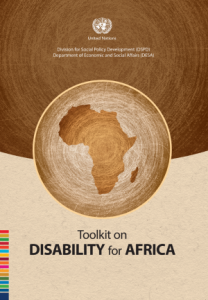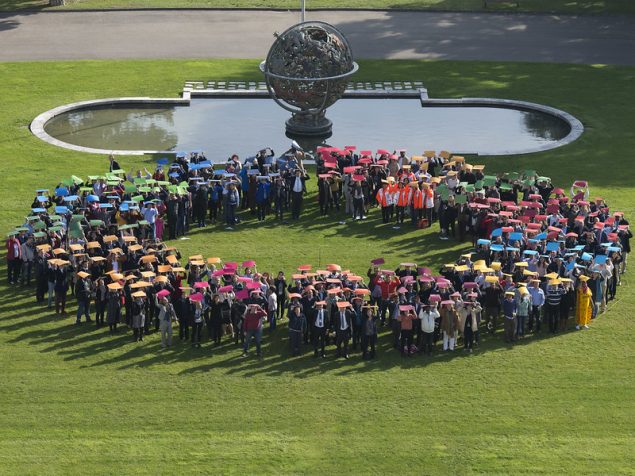1945 – 1955 – The United Nations Secretariat and the Economic and Social Council were the principal United Nations bodies concerned with disability issues, focused on promoting the rights of persons with physical disabilities as well as projects on disability prevention and rehabilitation.
1946 – The Social Commission, a subsidiary body to the organization, was entrusted with social questions. At its first session it established the Temporary Social Welfare Committee.
1950 – At its sixth session the Social Commission considered two reports: “The social rehabilitation of the handicapped” and “The social rehabilitation of the blind”. Persons with disabilities and rehabilitation were discussed at the Geneva Conference, 26 February – 3 March, attended by the United Nations Secretariat, the International Labour Organization (ILO), the World Health Organization (WHO), the United Nations Educational, Scientific and Cultural Organization (UNESCO), the International Refugee Organization, (IRO) and the United Nations International Children Emergency Fund (UNICEF), later renamed the United Nations Children’s Fund. The Commission agreed on the need to establish international standards for the education, treatment, training and placement of persons with disabilities, with particular attention to be given to blind persons in underdeveloped areas. The Economic and Social Council also recommended that States consider measures to help persons with disabilities.
1955 – 1970 – The focus of the United Nations on disability issues shifted in the late 1950s from a welfare perspective to one of social welfare.
1950 – On 22 November, on the inter-state level the Agreement on the Importation of Educational, Scientific, and Cultural Materials provided for the exemption of customs duties on the importation of certain goods as listed in the Annex of the Agreement. Among the privileged goods are “Articles for the Blind.”
1951 – At its seventh session, the Social Commission focused on the problems of social rehabilitation of persons with disabilities, drawing attention to the issues of adaptation and rehabilitation from an integrated perspective.
1952 – At its eighth session the Social Commission discussed international rehabilitation for persons with physical disabilities. Programmes approved by the United Nations, ILO, WHO, UNESCO, UNICEF and IRO were organized into ten categories: a new approach to disability, the education of public opinion, a complete rehabilitation programme, developing rehabilitation services, training rehabilitation personnel, organizing and financing rehabilitation services, the contribution of the United Nations and the specialized agencies, the contribution of non-governmental organizations, and methods of coordination.
1953 – At its ninth session the Social Commission expressed interest in programmes designed for the promotion of services for persons with disabilities which stress their independent and productive role in society.
1956 – The International Social Service Review was founded to raise awareness of disability issues and to emphasize rehabilitation programmes throughout the world.
1960s – The Social Commission began to develop monitoring mechanisms for the various United Nations rehabilitation programmes, specialized agencies, governmental and non-governmental organizations. A study and a survey were conducted on the administrative and legislative aspects of rehabilitation programmes and on facilities for training personnel in rehabilitation. An increased awareness was developing regarding the importance of new rehabilitation strategies.
1969 – The General Assembly adopted the Declaration on Social Progress and Development and affirmed, inter alia, the fundamental freedoms and principles of peace articulated in the Charter of the United Nations. Article 19 addressed the provision of health, social security, and social welfare services for all persons, aiming at the rehabilitation of persons with intellectual and physical disabilities to facilitate their integration into society.
1970s – The 1970s marked a new approach to disability. The concept of human rights for persons with disabilities began to be accepted internationally.
1970 – The Social Commission, at an inter-agency meeting attended by the ILO, UNESCO, WHO, UNICEF and the Council on World Organizations, promoted a new cooperative effort to assist developing countries with rehabilitation efforts. The ILO, UNESCO, WHO, UNICEF, the United Nations Development Programme (UNDP) and the World Rehabilitation Fund designed a programme to increase funds for technical assistance in the rehabilitation field, and rehabilitation experts were assigned to locations throughout the world.
1971 – On 20 December the General Assembly proclaimed the Declaration on the Rights of Mentally Retarded Persons and called for national and international action to embrace it as the accepted basis and frame of reference for protecting the rights of the persons with disabilities.
1972 – The Administrative Committee on Coordination considered recommendations of a report on an ad hoc meeting on rehabilitation of persons with disabilities. One recommendation stated that rehabilitation services should be integrated with basic medical, educational and vocational development programmes.
1973 – From 26 – 28 November, the ad hoc Inter-Agency Meeting on Rehabilitation of the Disabled was held in Geneva, attended by representatives of the United Nations, UNDP, the Office of the United Nations High Commissioner for Refugees (UNHCR), UNICEF, ILO, UNESCO, WHO, the Council of World Organizations Interested in the Handicapped, and the International Social Security Association. A strengthening of coordination and planning in the field of rehabilitation of the persons with disabilities was proposed. It was also suggested that the United Nations increase recruitment of persons with disabilities within the Organization.
1975 – At its twenty-fourth session the Commission for Social Development recommended elimination of physical and architectural barriers that prevent the full social integration of persons with disabilities. On 6 May the Economic and Social Council adopted resolution 1921 (LVIII), dealing with disability prevention and rehabilitation of persons with disabilities.
1975 – In December the General Assembly adopted the Declaration on the Rights of Disabled Persons, which states that all persons with disabilities are entitled to the rights stipulated, without respect to race, colour, sex, language, religion, political or other opinions, national or social origin, state of wealth, birth or any other situation.
1976 – The General Assembly recommended that all Member States take into account the recommendations outlined in the Declaration on the Rights of Disabled Persons when formulating policies, plans and programmes. It also proclaimed 1981 as the International Year for Disabled Persons, stressing that the Year should be devoted to fully integrating persons with disabilities into society and encouraging relevant study and research projects to educate the public on the rights of persons with disabilities. A trust fund for Member States’ contributions to the International Year is established by the Secretary-General.
1978 – The Secretary-General established the intergovernmental Advisory Committee for the International Year of Disabled Persons.




